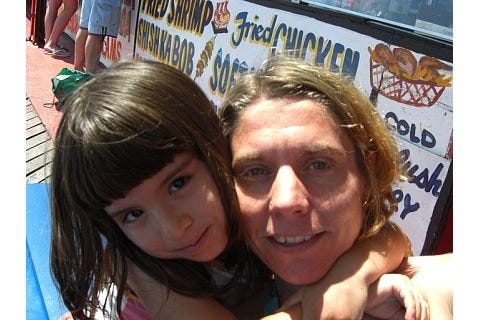A culture of care: helping activists and their allies look after themselves
 Wednesday, June 5, 2019 at 01:19PM
Wednesday, June 5, 2019 at 01:19PM Self-care is often the last thing on the minds of frontline human rights defenders. But it is the only thing that can make activism sustainable.
Last year at least 321 human rights defenders, in 27 countries, were killed, and frontline activists are increasingly also the targets of digital attacks and state oppression . The impacts of these threats transcend the activists’ work, rippling out to create fear and anxiety in their daily lives, for their families and within their communities. This lack of wellbeing is as paralysing as insecurity can be. Given this, self-care becomes a precondition for social justice work, and so – as feminist activist and writer Audre Lorde famously said – an act of political warfare.
People on the front line of that war need and deserve the support of donors and allies beyond their own communities. Many of those who we support at The Fund for Global Human Rights (the Fund), where I work, face steeply escalating security challenges and so we are in ongoing conversations with them about how we – as a donor and ally – can better, and over the long term, help lift the physical and emotional burden that insecurity places on them. From these conversations my colleagues and I have learned some important lessons about how to fund and support the security and well-being of frontline activists – but also about ourselves.
After the emergency
When we think of security risks and infringements of our wellbeing, it’s often acute dangers that come to mind: threats linked to a particular activity or event; the deep sadness that comes with the sudden death of friends. But the first lesson is that emergency help in response to an acute situation isn’t enough.
Within the human rights community, a focus on emergencies alone has encouraged the rise of ‘hard security’ experts and organisations, and emergency funds for the immediate evacuation of activists facing imminent risks. All these are great and necessary for responding to life-threatening security breaches. However, they do not address the long-term security and wellbeing needs of frontline activists or their communities once the emergency period has ended.
Right now, for example, the Fund is supporting the temporary relocation of four community leaders and their families. They were receiving threats because of their community’s resistance to a mining project that would destroy their land and jeopardise livelihoods. This relocation – and the accompanying strengthening of physical security for the community – can be absolutely necessary as a last resort. But it has consequences that last: disrupted learning for children, disrupted livelihoods for everyone, and ongoing guilt for placing one’s family in this position, to name a few.
Emergency help in response to an acute situation isn’t enough
Add to these long-term effects of acute danger the everyday risks of the work. Some are inherent in the pursuit of justice and equality itself, such as feeling powerless when campaigns fail or new injustices occur. Others are due to the specifics of the place where the work is done: war zones and humanitarian crisis areas are obvious examples, but women who work outside the home may be unable to escape the risks and stress of continuous sexual harassment even in their local neighbourhood.
In addition to being short-term, many security interventions fail to address the cumulative and insidious effects of day-to-day strains and frequent reminders that the world is unjust. To be effective, security and wellbeing measures require long-term relationships, flexible funding and a deep understanding of the specific work done by an organisation and its inherent risks.
For example, in two countries where the Fund operates – which cannot be named due to security risks – we have found that by helping activists to counter immediate physical threats we have won the trust needed to have deeper, more complicated conversations about wellbeing. These conversations address which day-to-day risks may be necessary or acceptable to get the work done; when pulling back from activism for a period could actually help sustain the work over the long term; and when colleagues need help to take a back seat. As a result of these deeper conversations, activists say they feel more open to ask for the additional wellbeing and security support they need: whether it is relocation, retreat space, support for medical bills, help to generate independent income sources, security cameras, psychosocial support or just flexibility to change what they are doing without affecting funding.
Through these conversations we have found that general, long-term funding makes it easier for frontline activists to openly share realities about emotional strain and security threats. This is because activists know they can adapt their work to changing circumstances without putting continued support in jeopardy.
It’s all relative
It is hard to feel well when you don’t feel safe and it is hard to feel safe when you don’t feel well. To complicate things still further, any individual’s idea of what ‘well’ or ‘safe’ feels like changes drastically depending on their environment and circumstances. Our second lesson at the Fund has been that wellbeing is relative and support must respect cultural differences.
A long-term grantee in Latin America recently went on a two-day meeting away from her country and told us that even this temporary respite from danger fostered deeper strategic thinking and longer-term resilience, simply because she could finally get a good night’s sleep.
The point here is not to force anyone into therapy or a daily yoga practice
At the same time, frontline activists often push back against suggestions that they might need to focus on their own or their colleagues’ wellbeing. There is a certain macho culture amongst many activists which labels psychosocial support as necessary only after a breakdown or for those who see themselves as victims. To many, thinking about wellbeing can feel frivolous and selfish: our communities are under attack as we speak, so what if we have nightmares and can’t relate to our kids?
The funder-grantee relationship itself can limit openness. As mentioned above, some frontline groups are reluctant to share emotional needs for fear their funder will yank support or believe they are incapable of delivering on a funded project – which may very well be the case where trauma is untreated.
For all these reasons, funders and allies of frontline activists must understand local stigma and practices around wellbeing. We should use our position to make suggestions, based on our experience with other partners – not impose pre-determined solutions. In many of the countries where the Fund works, counselling and mental health support are viewed with deep suspicion. The broader body-mind awareness culture that has gained popularity in the global north in the past couple of decades is seen as the refuge of those who just aren’t strong enough.
The point here is not to force anyone into therapy or a daily yoga practice, but rather to stimulate an ongoing conversation between activists, allies and funders which allows all to see the emotional strain of the work, makes seeking support normal and provides an assortment of possible mitigation strategies – which may be different across cultures and regions.
We are all in this together
In my two decades working for international human rights and social justice organisations, I have watched colleagues getting sick with worry, trauma and guilt, often with little more support than collegial compassion and a shared sense that this is just how it is. I myself remember calling peers late at night during my research or advocacy trips, from phone booths in bus stations and on deserted public squares (before affordable international cellphone service was available), to talk about what had just happened and how best to stay safe.
While these calls were soothing, the makeshift networks we cobbled together amounted to neither risk mitigation nor care. They were an expression of friendship: necessary but not enough. Some of this is changing, with more formal structures being put in place at the international level. But the recent crisis over alleged bullying and a toxic work environment at Amnesty International highlights just how far we still have to go.
Funders and other allies to frontline groups are not exempt from stress: we too have full workloads and exist in a culture that celebrates overwork and burnout as a badge of honour. In fact, a 2019 UK survey shows that 80 percent of charity workers have experienced workplace stress in the past 12 months. At the end of the day, if we are not willing to take our own security and wellbeing seriously, no one will trust we have theirs in mind.
Perhaps most importantly, we have learned that true security and wellbeing requires an ongoing culture of learning. It might even require a fundamental reboot of the way we work. Some funders are beginning to question the conceptual framing of holistic security and wellbeing: this is not just about being safe and feeling good, but rather about the sustainability of the work itself. Flexibility, collectiveness, inclusion, diversity, respect and self-awareness are strategies for achieving this, as well as being at the core of a world where human rights are defended.
 activism,
activism,  health,
health,  human rights,
human rights,  mental health,
mental health,  security
security 


